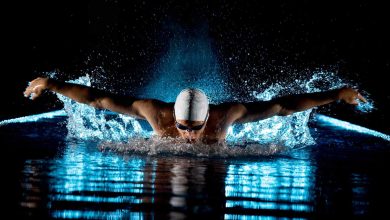Abstract: The intricate interplay between unemployment and inflation has long intrigued economists and policymakers. This article delves into the multifaceted relationship between these two economic indicators, exploring the theories, mechanisms, and empirical evidence that shed light on their dynamics. By examining the various ways in which unemployment and inflation interact, this article aims to provide a comprehensive understanding of this crucial economic relationship and its implications for policy formulation.
Introduction: The coexistence of unemployment and inflation presents a paradoxical scenario in economics, known as the Phillips curve. This article delves into the historical context, theories, and real-world implications of the relationship between unemployment and inflation, dissecting the factors that contribute to this intricate connection.
Phillips Curve and Trade-Off Theory:
- Phillips Curve: The Phillips curve posits an inverse relationship between unemployment and inflation, suggesting that as unemployment decreases, inflation tends to rise, and vice versa.
- Short-Run Trade-Off: Economies may experience a short-term trade-off between unemployment and inflation, where policies aimed at reducing unemployment may lead to higher inflation and vice versa.
Expectations and Adaptive Behavior:
- Adaptive Expectations: The relationship between unemployment and inflation is influenced by individuals’ adaptive expectations – their predictions of future inflation based on past experiences.
- Inflationary Spiral: High levels of inflation can lead to wage-price spirals, where workers demand higher wages to keep up with rising prices, leading to further inflation.
Natural Rate of Unemployment:
- Long-Run Phillips Curve: The long-run Phillips curve suggests that in the absence of adaptive expectations, there is a natural rate of unemployment below which inflation remains stable.
- Non-Accelerating Inflation Rate of Unemployment (NAIRU): NAIRU represents the lowest level of unemployment that can be sustained without accelerating inflation.
Supply and Demand Shocks:
- Cost-Push Inflation: Supply shocks, such as increases in oil prices, can lead to cost-push inflation, where rising production costs result in higher prices and potentially higher unemployment.
- Demand-Pull Inflation: Rapid demand growth can lead to demand-pull inflation, where businesses increase prices due to excess demand, potentially leading to lower unemployment.
Policy Implications:
- Phillips Curve as a Guide: Policymakers historically used the Phillips curve as a guide for balancing unemployment and inflation through monetary and fiscal measures.
- Long-Run Considerations: In the long run, the trade-off between unemployment and inflation may be less pronounced, emphasizing the importance of policies that focus on sustainable economic growth.
The relationship between unemployment and inflation is complex and multifaceted, influenced by various economic, psychological, and policy factors. Understanding this intricate connection is essential for policymakers seeking to achieve stable economic conditions and informed decision-making. As economies continue to evolve, the dynamic interplay between unemployment and inflation will remain a focal point for economic analysis and policy formulation.
Strategies for Professional Advancement and Facilitating Job Search: Unlocking Easier Employment Opportunities
Abstract: In today’s competitive job market, continuously improving one’s professional skills and enhancing job search strategies is essential for securing lucrative and fulfilling employment. This article delves into practical approaches and effective techniques to facilitate job hunting, increase employability, and ensure success in a rapidly evolving work environment. By addressing the significance of skill development, networking, and leveraging digital tools, this article provides insights into how individuals can navigate the job search process and enhance their chances of finding desirable employment opportunities.
Introduction: In a dynamic and competitive job market, the ability to secure employment efficiently is a crucial skill. This article explores proactive measures individuals can take to improve their job search and increase their employability, ultimately leading to better and more accessible job opportunities.
Continuous Skill Development:
- Identify High-Demand Skills: Research and identify skills that are in demand within your industry or field. Continuous learning and adaptation are key to staying relevant.
- Online Learning Platforms: Utilize online courses, webinars, and tutorials to enhance existing skills and acquire new ones, making you a more attractive candidate to potential employers.
Effective Networking:
- Professional Organizations: Join industry-specific associations and attend networking events to connect with professionals and stay updated on industry trends.
- LinkedIn: Create and maintain a strong LinkedIn profile to connect with professionals, showcase your skills, and explore potential job opportunities.
Crafting an Impressive Resume:
- Tailored Resumes: Customize your resume for each job application, highlighting relevant skills and experience that align with the job description.
- Quantifiable Achievements: Use specific metrics and achievements to demonstrate the impact you’ve had in previous roles.
Leveraging Digital Tools:
- Job Search Websites: Utilize online job search platforms to access a wide range of job openings and filter results based on your preferences.
- Social Media: Use social media platforms like Twitter and Facebook to follow companies, engage in relevant discussions, and learn about job openings.
Interview Preparedness:
- Research and Practice: Research the company and practice answering common interview questions to demonstrate your enthusiasm and preparedness.
- Portfolio Showcase: Create a digital portfolio showcasing your work, projects, and accomplishments to impress potential employers.
Utilizing Recruitment Agencies:
- Recruitment Firms: Consider registering with reputable recruitment agencies that specialize in your field, as they can connect you with tailored job opportunities.
- Temp-to-Perm Positions: Temporary positions can serve as stepping stones to permanent roles, allowing you to showcase your skills and potentially secure long-term employment.
Unlocking easier job opportunities involves a combination of skill development, networking, digital proficiency, and strategic job search techniques. By consistently honing your skills, building a strong professional network, leveraging digital tools, and presenting yourself effectively during interviews, you can enhance your employability and increase your chances of securing desirable job positions. Embracing a proactive and adaptable approach to professional advancement will not only facilitate your job search but also pave the way for a fulfilling and successful career journey.


















